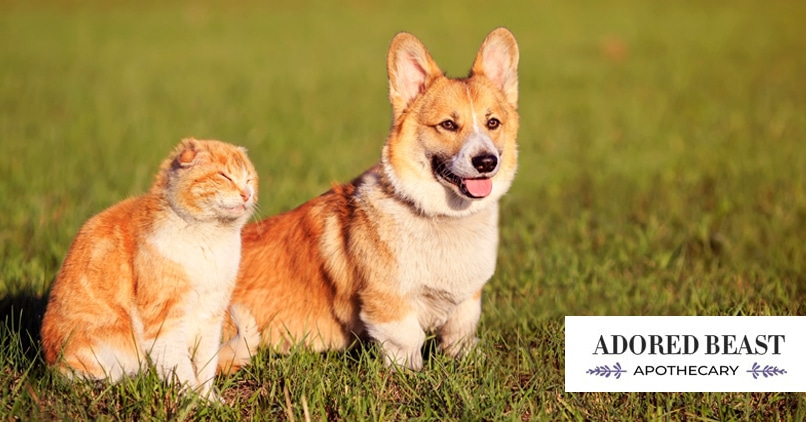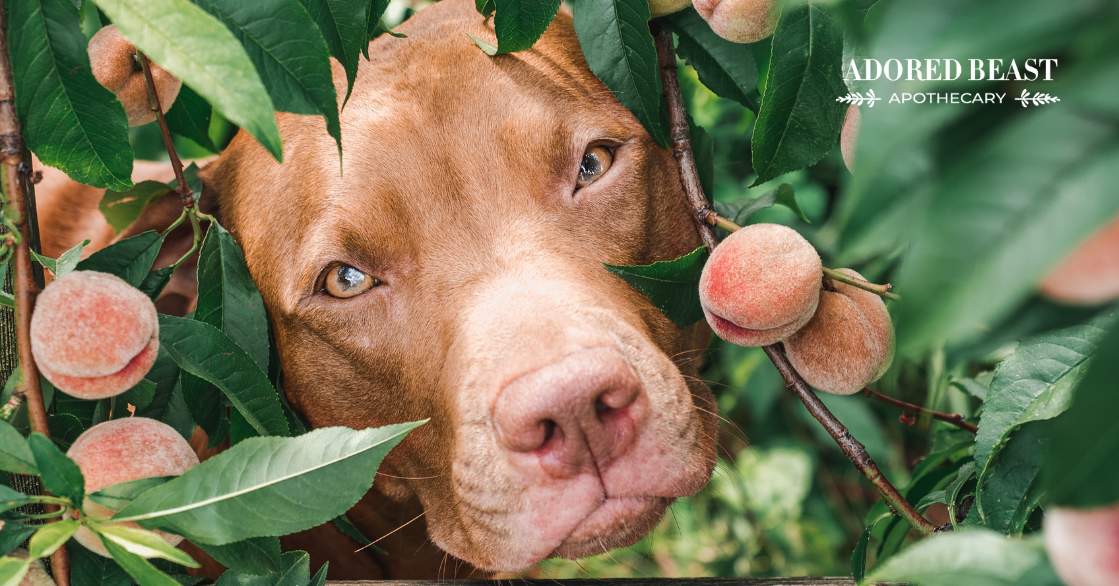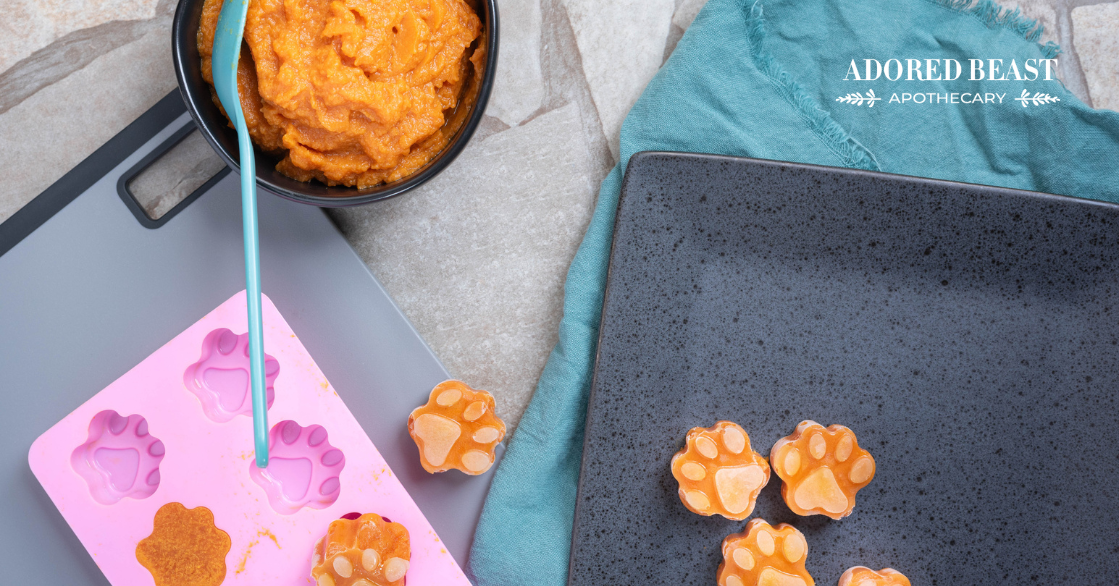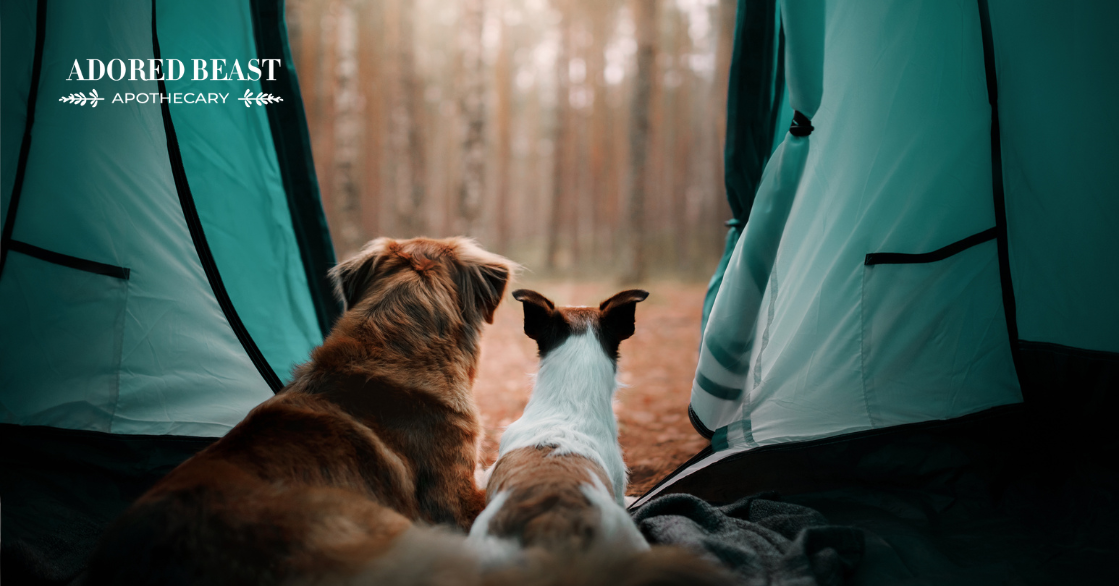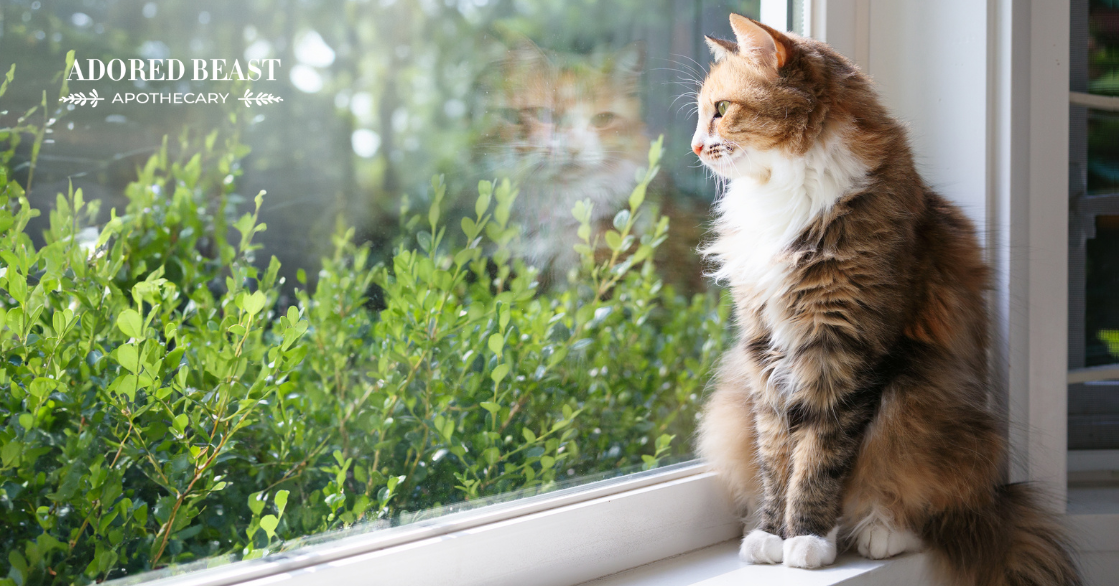Cat and dog obesity: is it really a medical situation or is it a global emotional, philosophical dis-ease that affects all human and companion animals? You can decide.
**Not sure what I mean by dis-ease – check this out:
Disease – a condition of the living animal or plant body or of one of its parts that impairs normal functioning and is typically manifested by distinguishing signs and symptoms.
Dis-ease – a frequently used hyphenated version which simply means the body is at un-ease or is imbalanced. Holistic practitioners believe that the body can always come back into homeostasis. (Homeostasis is the ability of the body, given the correct tools, to recover from life-threatening illness.) Therefore, most diseases can be rebalanced by a holistic approach.
Man, I really do NOT like to talk about this subject, but the fact is, it is an issue. 54% of dogs and 59% of our cats are obese or overweight.
Because it’s Pet Obesity Awareness Week, there are going to be some amazing articles out there on this topic, but I’d like to take a look at this epidemic from a higher level, or from a more “holistic approach.” And that will include giving you detailed information on the reasons for cat and dog obesity and tips on how to overcome it.
Cat and Dog Obesity: Are Diets the Answer?
Before we get started, I would like to ask you few questions:
- How many of you out there have gone on a diet with “special” diet foods or by limiting your calories?
- And… how many of you loved it, just couldn’t WAIT to eat it, and it satisfied you and your cravings and you lost tons of weight and are now living happily ever after…?
Hmm, that’s what I thought.
Now, what I would like you to think about is how you would feel if you had to sit inside your home all day, not read a book, or go on Facebook or Twitter or Instagram, or watch TV or surf the net? What if you were not allowed to just go for a walk when you wanted to or talk too loud or laugh too loud or get mad? And top of that, you had to eat that amazing diet food we all know and love. Yup, not such a fun picture is it? But this is a very real and very common world for our “obese” dogs and cats.
Last question, I PROMISE. How many of you out there have said “I just wish someone would cook really tasty, wholesome, non-fattening food for me, like gluten-free apple crisp with honey or coconut-braised chicken or curry lentils. Then for sure I’d stick to it, lose weight and be healthier.” Add in a personal trainer who comes right to your house for an hour a day… wow – fit, trim, happy, healthy, here we come! Right?
Oh, and how many of us going through hormonal changes (men and women) are gaining weight without even eating? (I know I promised no more questions, but I just thought about this one). These are the same reasons our dogs and cats are fat. The processed food, not enough exercise, boredom, stress, and hormones are all factors!
Except there is one MAJOR difference! Our animals do NOT have free will. If they did, I can guarantee you they would be going for walks – LOTS OF WALKS! They’d be eating a raw food diet, they’d be barking and healthy and happy without a personal trainer or chef (unless you want to call an unsuspecting rabbit healthy take-out). And they probably would not be losing their hormones at the age of 6 months (sometimes as horrible as 8 weeks) from spay and neuter surgeries.
Check out our article by Andrea Ring for more on the spay and neuter debate – find it here.
The point I am trying to make is that obesity is a human disease and unfortunately it is being passed down to our pets. It’s a major part of our society, along with depression and anxiety, two other issues our pets can get.
As you are probably starting to understand, the reasons our animals are getting fat has a lot to do with us!
Pet Obesity Statistics and Factors
Do a fast Google search and you’ll quickly see that this is a common problem we really share with our animals.
According to the stats, 36.5 percent of American adults are obese. Another 32.5 percent are overweight. In all, more than two-thirds of adults in the United States are overweight or obese.
Remember – 54% of our dogs and 59% of our cats are considered overweight or obese.
Please don’t think this article is about guilt, even though it sort of sounds like it. It’s more about the wow factor of “my gosh, I never thought of my pet’s obesity that way!”
One of my biggest challenges is that I can not look at ANYTHING separately, especially disease or health issues. There are many influences that could be contributing to your pet being overweight… And by the way a bit overweight and healthy is very different than obesity.
According to conventional medicine, obese dogs and cats are at an increased risk of many different conditions, including:
- many types of cancer
- diabetes
- heart disease
- hypertension
- osteoarthritis and a faster degeneration of affected joints
- urinary bladder stones
- anesthetic complications as they are less heat tolerant
Although I support this information from a very narrow focus, I believe obesity is a manifestation of a larger underlying societal dis-ease, for people, and inadvertently, our pets. My goal is to help you understand the deeper issue of why cat and dog obesity happens and how we can not only prevent it but give our pets and ourselves a better life while doing it. If we can do that, the diseases above will automatically reduce exponentially.
As a side note, the diseases like cancer, heart disease, osteoarthritis, joint disease, bladder stones mentioned above are rampant in dogs and people, even thin dogs and people! Autoimmune and chronic disease are equally epidemic, just like obesity, and come from many of the same causes. Following a healthier lifestyle, not just a diet, can help to alleviate so much suffering and increase longevity for your animal companion and you!
Let’s look at some of the factors that contribute to obesity, or dis-ease in general, and some tips on what we can do to bring the body back to balance.
Cat and Dog Obesity: The Whys and Tips for Support
1. Processed Food
This should really be a no brainer.
This link below is a great site for people. It talks about the philosophy and science of eating to stay healthy – NOT just thin! And it tells you how to do that when you are grocery shopping 🙂
Shop the perimeter of the grocery store, where fresh foods like fruits, vegetables, dairy, meat, and fish are usually located. Avoid the center aisles where junk foods lurk. Choose “real” foods, such as 100% fruit juice or 100% whole-grain items with as little processing and as few additives as possible.
Check this out: 10 Tips for Healthy Grocery Shopping
Now, how do we do this with our pets? Exactly the same way, only geared to the fact that dogs are predominantly carnivores and cats are 100% carnivores.
Tips to Support
Whenever possible feed a fresh food, raw, spices appropriate, balanced diet.
If you, or someone in your family, is not comfortable with raw food then feed a home-cooked, balanced diet. I highly recommend Dr. Karen Becker’s book, Dr. Becker’s Real Food For Healthy Dogs and Cats: Simple Homemade Food.
If cost is an issue and you must feed kibble, please do not feel guilty. Try soaking it with bone broth, adding a digestive enzyme and probiotic, and add leftover meat, vegetables, or canned sardines. Be sure to find the best dry food possible. Look for ones with the lowest amounts of fillers, starches, and chemicals.
2. Poor Gut Microbiome or a Traumatized Gut
The mucosal lining of the gut plays a major role in several metabolic processes, such as insulin sensitivity, glucose intolerance, fat storage, and appetite (talk about a connection to obesity!!!!), along with over 80% of the body’s immune function.
Tips to Support
There are several things you can do to protect and heal the gut:
- feed the correct species appropriate probiotics
- add healing herbs and minerals that aid in the healing of the gut lining, such as slippery elm, marshmallow root, or larch
- feed a fresh food species appropriate diet
- stay away, as much as you possibly can, from drugs and antibiotics – they destroy all gut bacteria – good and bad!
3. Lack of Exercise
Again, this should be a no brainer, but many people choose to be entertained by their phones or the television instead of going for a walk or being in nature. Here is where it gets tricky. Even though you think you are being “entertained,” your actual brain is bored to death! When your brain stops working (learning or noticing or exploring or seeing) on its own and only downloads things fed to it from Netflix or Facebook, the part of your brain that actually needs to be exercised to stay healthy becomes unhealthy. This in turn leads to numerous brain diseases such as Alzheimer’s, depression, and anxiety, or issues with things like your memory. Then, when boredom of your actual mind kicks in, you are not only sitting and not moving but you crave chips and popcorn to try and keep that part of you mind occupied.
As you can see, it becomes a viscous, actually incredibly addictive, circle, leading to major mental health and physical health concerns, whether you are obese, fit, or thin!
Your animal’s brain is no different. It needs stimulation. It needs exercise. Just as it isn’t healthy for you to sit on your phone all day, your dog needs more than to just stare at the wall, eat, and sleep.
Enter your canine helper! By helping your animals, inevitably, you’re helping yourself.
Tips to Support
Go for more walks and hikes. AND leave your cell phone at home or turned off, I dare you. Running or biking with your dog is great, but it’s equally as important to allow them to have time to be a dog. Here’s why: What really gets dogs thinking is being in nature. For a dog, when they smell something, it’s like reading the newspaper. They learn so much – who was there before them, what kind of dog, if it was a girl or a boy, if they’re angry or docile, if they’re spayed or neutered… Allowing your dog to just be a dog is really important. Let your dog sniff – that’s their stimulation. They need to be able to do dog things (or cat things).
If you can’t get out in nature, do some brain games with your pet to stimulate their mind. Anything that gets them thinking is great exercise, and keeps their mind healthy. And, if you’re both moving around instead of sitting, that’s way better!
You may be doing this for your pup, but just because you love and adore your dog and want them to live a long healthy life, YOU also ultimately get more exercise, you develop more brain capacity, can prevent age related brain disease or mental health issues at any age and have a way better chance of having that furry kid of yours in your life a much longer time. When you live with a dog there really is NO separation. The love they share and the gifts they give us are at every turn of our existence! So get them out to enjoy their bliss and feel that connection of the two of you getting healthier and happier.
4. Hormones
Acne as a teen, menstrual cramps, menopause, night sweats, memory loss, osteoporosis, hair loss, arthritis, balding, prostate problems… as humans, we all know the havoc of what unbalanced sex hormones can do to the body. Now, just imagine what our bodies would be like if we lost those hormones at age 6 months!
This part of the article is not to say that spaying and neutering should not be done. It does not negate that doing it comes from a place of trying to lessen the suffering of unwanted puppies and kittens. It is saying that we 100% can’t ignore the fact that it does have a huge, negative impact on our animals, physiologically and psychologically. Therefore, it’s important to know what we can do to support them long term after spay and neuter and get educated on the “if and when we should spay and neuter” debate.
The cascade of symptoms and diseases that come from de-sexing an animal are many, but the one system that is incredibly comprised by this is the Endocrine System. This system then needs to “weigh heavily” on the adrenal glands, which already have way too much work on their hands as it is, let alone having to step up and take the brunt of the lack of sex hormones that should naturally be there to create the proper development of everything in the body growing, from the skeletal system to the brain. The effects on the body can happen right away, but the results of those effects or the symptoms can happen over the course of your animal’s life.
When these adrenal glands start to over-function, the impact on the body is diverse and can be the cause of issues like:
- Low functioning metabolism (weight gain)
- Inadequate mineral absorption in bones and teeth, leading to dental disease and joint disease
- Fragile soft tissue, leading to issues like torn cruciate
- Early arthritis and joint inflammation
- Incontinence
- Inability to adjust to life with symptoms like separation anxiety, aggression, ADHD and depression, with with cats, over-grooming, hyperesthesia, spraying or inappropriate urination
Depending on the susceptibility of the breed and your animal’s sex, you will see different symptoms. Often what I have seen in my practice are diseases that we would maybe see in senior years, like hip disease or metabolic issues, rearing their ugly head early in life.
Tips to Support
It’s all so cool because you are seeing now how the body is one big eco-system and how absolutely everything plays a part and nothing can be looked at as just “obesity.”
The hormonal system needs:
- A nutrient rich fresh food diet
- Supplements supporting hormones like:
- Probiotics simulate a TON of hormones that play a major role in the metabolic process
- Amino Acids
- Homeopathic hormone support
- Naturally occurring lignans, found in some flax seed products – make sure the lignans are not removed
- Exercise (there it is again :))
5. Boredom, Isolation, Anxiety, Depression, Stress
Boredom and isolation lead to anxiety and stress, which then lead to chronic high levels of cortisol. This leads to both cat and dog obesity and OR chronic disease.
Chronically elevated cortisol can seriously make you and your pet vulnerable to many health issues, including:
- weight gain
- high blood pressure
- diabetes
- lowered immunity
- leaky gut
- many major chronic diseases including cancer
Dogs are pack animals and cats are continuous hunters. Being left alone for hours at a time or locked in a house with no source of stimulation wreaks havoc on the emotional state and physical health of all animals.
Lack of exercise and healthy stimulation and pack/family time leads to chronic increased cortisol. This leads to chronic disease, even if your animal is the perfect weight! Even if you know that all your dog or cat does all day is sleep, that sleep is a coping mechanism for depression and anxiety and can also be a sign of chronically high cortisol. The same holds true with pacing, detraction, and separation anxiety – it can have polar opposite pictures depending on the animal. Just like people – when humans are anxious or depressed, some people want to be alone and sleep while some people are hysterical and destructive.
So why do all animals have this cortisol? It sounds like a negative hormone. Well, cortisol is essential to stay alive! I am sure you have all heard of “fight or flight?” Think back to our (and our animals’ ancestors). Many situations would have resulted in the fight or flight response: running away from a sabre tooth tiger, a cat running from a pack of wolves, or dogs protecting their pack or their young… Cortisol is released every time you are stressed or perceive danger. When it is truly needed, cortisol replenishes energy after a big fight or after fleeing so as not to become something’s dinner.
Now, stress comes in different forms – a second mortgage, a break up, traffic jams, single parenting, exams… we live in an age of cortisol being released and saturating our blood and tissue ALL THE TIME! This leads to massive mental and physical health problems.
You are probably asking how this has anything to do with your dog or cat. Well, it plays a huge role in their disease.
The same way we have “evolved” to be chronically stressed, so have they. We put our animals in the most unnatural setting they could possibly be living in. Not even that long ago (50 years), dogs and cats were let out in the morning and mostly roamed, even in subdivisions. They were hunting groundhogs or mice and birds, getting in fights, having sex, running and playing…
They are hardwired to be with their pack or do a job or hunt, and above all they are built to move! Being alone and not moving with no stimulation is incredibility stressful. You are their pack. When you leave, it is unnatural for them. I am not saying you have to stay home with your pets, but I am saying they need interaction, movement, and stimulation and not just an hour a day. Imagine if that was all you got – one hour to move around, go on Facebook, talk to friends or family…
All of this supports chronically high levels of cortisol, which equals dis-ease.
Tips to Support
There are plenty of ways to stimulate your pet’s mind and help them stay active, both psychically and mentally, all throughout the day:
- Daycare
- Dogs walkers
- Another animal as a partner, especially for indoor cats (if the situation is right for it)
- Play with your cat
- Have your dog go with you to tuck in your kids and hear the bedtime stories
- Tell them about your day or tell them a story
- Go for as many walks as you can
- Let them sniff (don’t just drag them around on a leash while you talk on your cell phone)
- If you jog with them, be sure to emotionally interact with them when you get home and allow them playtime with other dogs
Since our cats tend to get less exercise, especially indoor cats, it’s important to manage their boredom and stress. Here, Dr. Jean Hofve gives some great tips on how to do that!
6. Disease
Sometimes weight gain and cat and dog obesity are due not to an indulgence or lack, but as a result of some underlying condition. In this case, it is imperative that you speak with your veterinarian to get to the root cause.
Also, please be aware that fluid is not fat, and a pot belly is not fat. It could be anything from Cushing’s disease, heart disease, lung disease, liver issues, or any organ malfunction.
Other physical diseases that can cause obesity are hypothyroidism, joint pain, or a gut or microbiome imbalance.
Tips to Support
Start with a trip to your holistic vet.
- Have your vet check a full blood panel with not only a T4 but a full thyroid panel, including T3, T4, free T3, free T4, and auto-antibodies
- Check the microbiome. Consider a test to assess the state of your dog’s gut health. We really like and support AnimalBiome!
7. How Often Do They Eat
Dogs and cats are built to hunt and then eat. They are NOT built to graze like a cow or a horse. When they do, it taxes the pancreas and the digestive tract and many metabolic issue can take place that contribute to obesity.
Tips to Support
- If you feed your animal by making sure there is always food in the dish, stop that (slowly – see below). It’s very difficult to tell how much your animal is eating, and if they’re overweight, this is likely contributing to it.
- If they do graze currently, SLOWLY decrease the amount throughout the day and increase the morning and evening meals.
- Use a specially defined dish to help turn mealtime into a mental activity. We like the Mine Pet Platter.
8. Do you fast them WITHOUT YOU FASTING!
Again, dogs are pack animals. You would not see a wolf pack all eating and deciding that just one member would go without. When your family is eating but you choose to fast your dogs and they smell the food, their bodies start to create the natural digestive enzymes that are part of the digestive process. This can be be unhealthy and extremely stressful.
Just an FYI, if you tend to be high stressed or have a high stress lifestyle, research shows that severely limiting caloric intake can kick off a series of biochemical events that ultimately increase stress, make you feel hungrier, and gain weight. The same holds true for your dogs and cats. I have seen SO many dogs and cats in my practice on super low caloric intake gain a ton of weight because of the stress of being hungry!
Just to be clear please DO NOT fast your cat! Fasting your cat can lead to a life-threatening disease called hepatic lipidosis.
Tips to Support
- Fasting is a huge trend right now. If you fast, involve your dog once a week in it as well but only when you are not eating.
- If you don’t fast, eat out the day you fast your dog.
- Always feed a bone on fast days.
Cat and Dog Obesity Take Aways – and I Don’t Mean Pizza!
Cat and dog obesity, as with ALL dis-ease, is a much bigger picture than just being fat and going on some ridiculous diet food or fad thinking that will solve the problem. I am here to say it won’t.
But what will is looking at the reasons behind it. We can work together not only for a better, happier, longer life for our pets, but also to change our outlook with ourselves. Instead of worrying what you look like or what your dog or cat looks like, let’s educate and support the public to get out in nature, play and find joy, put down those cell phones and computers, connect with our hearts, learn something new, cook for ourselves, our families, and our pets. Let’s all get healthier together, mentally, physically, and emotionally. Love yourself like your dogs love you (how many of us can do that) and love your dog and cat back the same way. Have less judgement and more love and acceptance and let’s address this obesity epidemic on a whole different level. I know we can!

